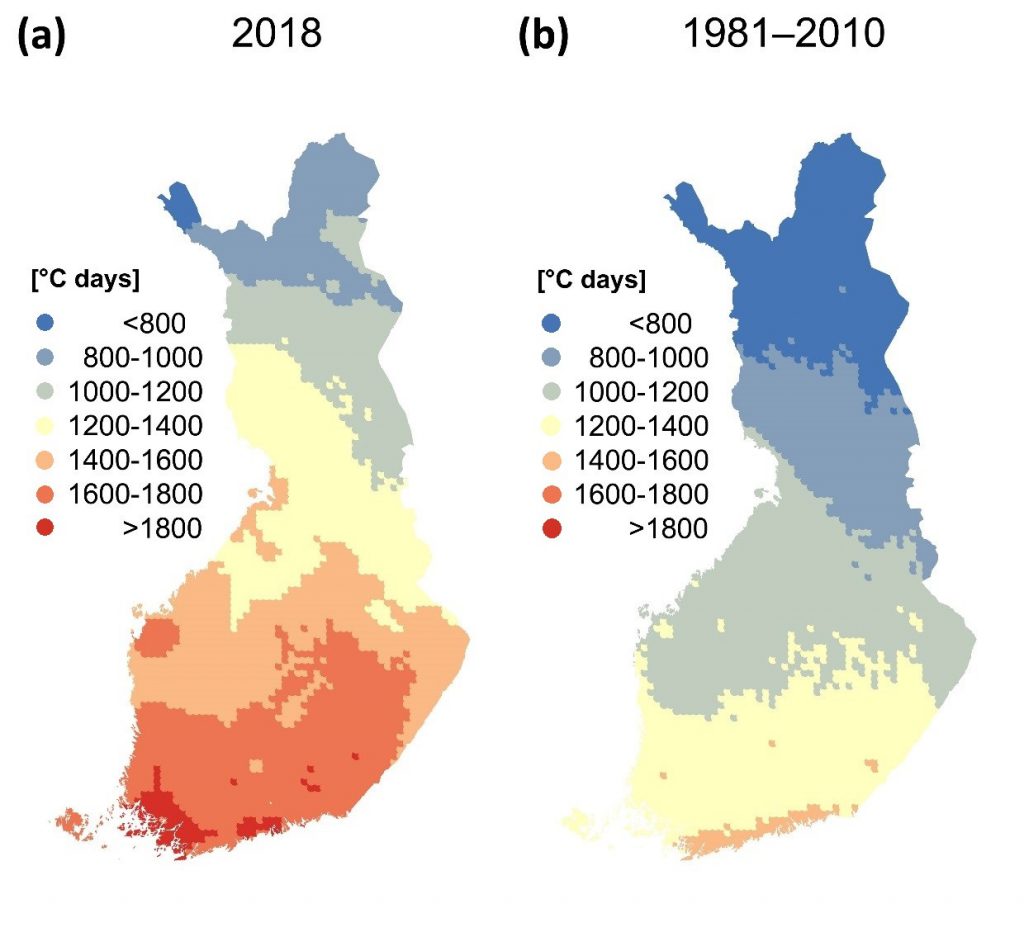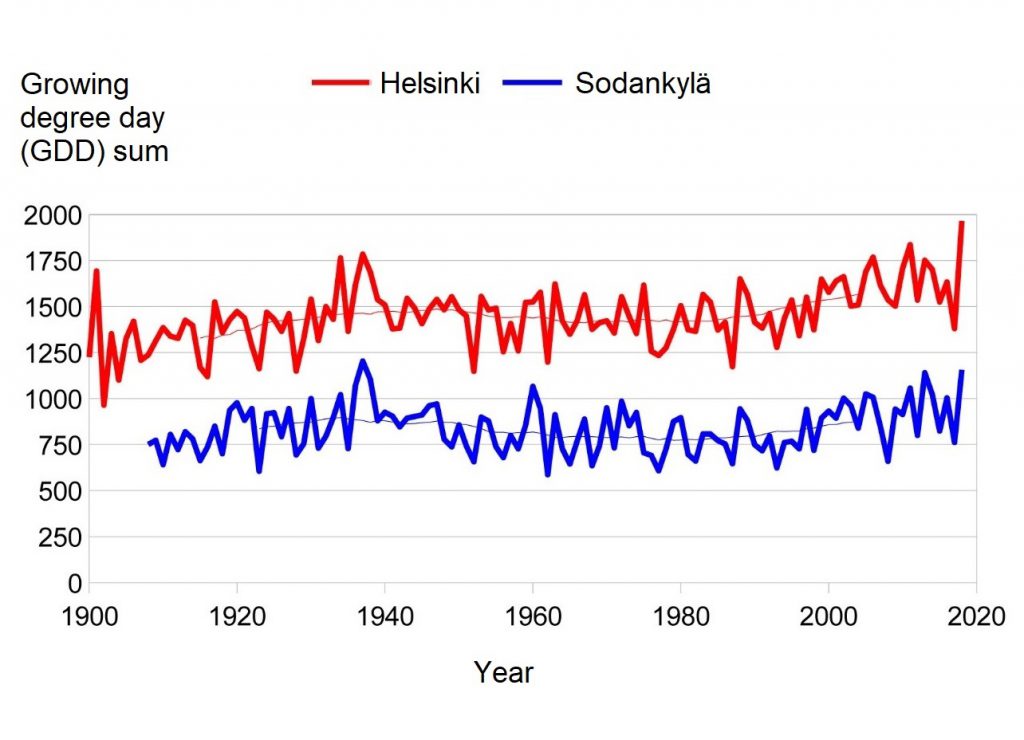The summer of 2018 saw exceptionally high temperatures leading to record-breaking effective temperature sum in large parts of Finland. Years with a similarly warm thermal growing season are expected to become more frequent in the future.
ILARI LEHTONEN, PENTTI PIRINEN
Finnish Meteorological Institute
The effective temperature sum, or the growing degree day (GDD) sum is a widely used measure of the intensity of thermal growing season (TGS). TGS is defined to begin when the daily mean temperature rises above a selected threshold (5 °C in Finland) in spring and snow has melted from open areas. In autumn, TGS terminates when daily mean temperature falls permanently below the same threshold. GDD sum is then calculated by summing the daily mean temperature excess above the threshold during TGS.
The summer of 2018 was very warm in northern Europe leading to exceptionally high GDD sums. While GDD sum varies in a typical year between 1200 and 1500 °C days in southern Finland and in the north from 600 to 900 °C days, with the exception of highest elevated areas, GDD sum in 2018 exceeded these normal values widely by 300–400 °C days (Fig. 1). Highest GDD sums in 2018 in Finland were more than 1900 °C days in the south, corresponding to typical values in Poland (Wypych et al., 2017). Over most of Finland GDD sum was record high in 2018. In Helsinki, the previous record from 2011 was exceeded by over 100 °C days but in Sodankylä in northern Finland, GDD sum remained short compared to the year 1937 (Fig. 2).


On a longer time scale, periodicity matching with the phase of the Atlantic multidecadal oscillation (AMO) (Polonskii, 2008) can be seen in the variability of GDD sums, including a rising trend after the 1980s both in Helsinki and Sodankylä (Fig. 2). During the last approximately 10 years, GDD sums have been on average even as high as the climate projections indicate for the mid-21st century (Ruosteenoja et al., 2011). Hence, it can be hypothesized that the rapid increase in GDD sums after the 1980s might be partly attributable to AMO and only partly to anthropogenic climate change. However, by the end of the 21st century, GDD sums similar to those in 2018 are projected to become typical in Finland (Ruosteenoja et al., 2011, 2016). Moreover, as the climate warming continues, it will soon become very unlikely to have a cool TGS as evaluated by current climate statistics whereas the probability to have an anomalously warm TGS, like 2018, will increase rapidly (Ruosteenoja et al., 2016).
References
Polonskii, A. B., 2008: Atlantic multidecadal oscillation and its manifestations in the Atlantic-European region. Phys. Oceanogr., 18, 227–236.
Ruosteenoja, K., et al., 2011: Projected changes in thermal seasons and the growing season in Finland. Int. J. Climatol., 31, 1473–1487.
Ruosteenoja, K., et al., 2016: Projections for the duration and degree days of the thermal growing season in Europe derived from CMIP5 model output. Int. J. Climatol., 36, 3039–3055.
Wypych, A., et al., 2017: Variability of growing degree days in Poland in response to ongoing climate changes in Europe. Int. J. Biometeorol., 61, 49–59.
HOW TO CITE THIS ARTICLE:
Lehtonen I., and Pirinen P., 2019: 2018: An exceptionally warm thermal growing season in Finland, FMI’s Climate Bulletin: Research Letters, 1(1), 5, DOI: 10.35614/ISSN-2341-6408-IK-2019-03-RL
CITATION INFORMATION:
Authors: Ilari Lehtonen and Pentti Pirinen
Received: March 28, 2019
Accepted: June 11, 2019
First online: June 19, 2019
Published: June 20, 2019
Journal: FMI’s Climate Bulletin: Research Letters
Volume: 1
Issue: 1
Page: 5
DOI: 10.35614/ISSN-2341-6408-IK-2019-03-RL
Header image: Eija Vallinheimo



